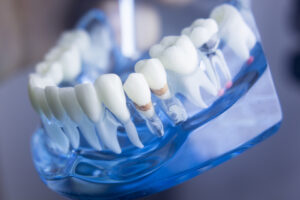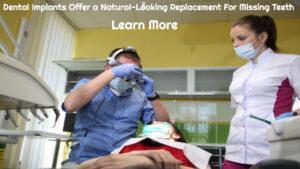Atrophic Tooth Gap – How Do Specialist Surgeons Treat It
Clinicians must make a decision about how to treat a significantly atrophic tooth gap. Most folks are baffled as to how they came to this decision. Researchers were curious in how they chose which strategy to utilize. What considerations do they evaluate when determining which treatment is best?
The Study
Researchers polled 250 oral and maxillofacial surgeons in southern Germany to find out how they decide whether to treat single or numerous atrophic tooth gaps. For example, the researchers wanted to collect data on the elements considered when developing a treatment plan. The first part of the study looked at the patient’s age and if endocarditis prophylaxis, or the prevention of inflammation of the heart’s inner walls and valves, was required. The second section of the survey inquired about the patient’s anxiety and whether or not he or she was receiving bisphosphonate therapy. Bisphosphonates are medications that assist prevent or reducing bone weakening (osteoporosis). A “bone block,” “bone split,” “bone excision,” and “augmentation of the bone with a substitute substance” were among the treatment choices.
When there is insufficient bone mass to support a tooth implant, an oral or maxillofacial surgeon may propose a bone block to replace missing teeth. The bone split approach, on the other hand, is useful as a treatment for a thin bone ridge since it allows for ridge expansion. In terms of the bone augmentation option, an alveolar bone augmentation operation entails entirely creating and sculpting newly produced bone with a bone substitute substance. Finally, an oral or maxillofacial surgeon may advise a bone excision to remove pointed remnant alveolar bone and provide a wide enough implant site.
Results
68 of the 117 people who took part in the poll were oral surgeons. The remainder of the respondents were maxillofacial surgeons. The researchers discovered that patient age and anxiety have only a little role in treatment choice selection. In contrast, necessary endocarditis prophylaxis resulted in responders declining bone split, bone block, and bone augmentation using a substitute material at substantially greater rates. Furthermore, this fear resulted in a greater general refusal of any therapy.
Respondents were more inclined to refuse any treatment when it came to bisphosphonate therapy. The various therapy alternatives had little bearing on this refusal. When this characteristic was present, respondents preferred to avoid therapy in general. Oral surgeons were more likely to decline treatment than maxillofacial surgeons when it came to patient age and the necessity for endocarditis prevention. In terms of patient anxiety and bisphosphonate therapy, researchers found no difference between the two professions.
Researchers discovered that patient age and anxiety were not major variables in a specialist’s treatment decision for a highly atrophic tooth gap. Surgeons, on the other hand, were unwilling to treat men and women who were receiving bisphosphonate therapy or needed endocarditis prophylaxis.
What Does This Mean?
Surgeons are still hesitant to fix an atrophic tooth gap in patients who require endocarditis prophylaxis or are on bisphosphonate medication. However, when making a treatment decision, they also take into account other aspects. In addition to a patient’s age and comorbidities, the surgeon takes into account their attitude and whether or not they smoke.
Furthermore, when making this selection, the surgeon’s knowledge and typical processes come into play. Maxillofacial surgeons were more likely than oral surgeons to take on these situations. Their understanding of alveolar ridge widening and other methods that may be required as part of the operation may influence their propensity to accept more of these cases.
Oral and maxillofacial surgeons both accept cases involving the implantological restoration of a tooth gap, whether it is a single or multiple-tooth gap. The specialist’s title has minimal bearing on the therapy chosen by the patient, as do the patient’s age and level of anxiety.
Patients who require endocarditis prophylaxis are less likely to have a bone split, bone block, or bone augmentation with a substitute material. Patients on bisphosphonate therapy or requiring endocarditis prophylaxis are more likely to be turned away by surgeons. Surgeons from both specialties are more likely to decline a comorbid patient. When treating a patient with tooth loss, oral and maxillofacial surgeons must take this information into account.
What Should You Do If You Have An Atrophic Tooth Gap?
 You may be concerned about your treatment options if you have an atrophic tooth gap. You should get dental care if you have a tooth gap. Dental implants are a treatment option that dentists can utilize to fill the space between your teeth. If you have this issue, you should get treatment from a dental specialist. These specialists have received extensive training in the treatment of patients with missing teeth. You’ll also have a new, healthy grin and the confidence to speak with friends and family.
You may be concerned about your treatment options if you have an atrophic tooth gap. You should get dental care if you have a tooth gap. Dental implants are a treatment option that dentists can utilize to fill the space between your teeth. If you have this issue, you should get treatment from a dental specialist. These specialists have received extensive training in the treatment of patients with missing teeth. You’ll also have a new, healthy grin and the confidence to speak with friends and family.
Brought To You By: StarBrite Dental
The post Treatment Considerations For Patients With An Atrophic Tooth Gap appeared first on https://arquiaca.org
The post Treatment Considerations For Patients With An Atrophic Tooth Gap appeared first on https://wookicentral.com
The post Treatment Considerations For Patients With An Atrophic Tooth Gap appeared first on https://gqcentral.co.uk








Comments are closed